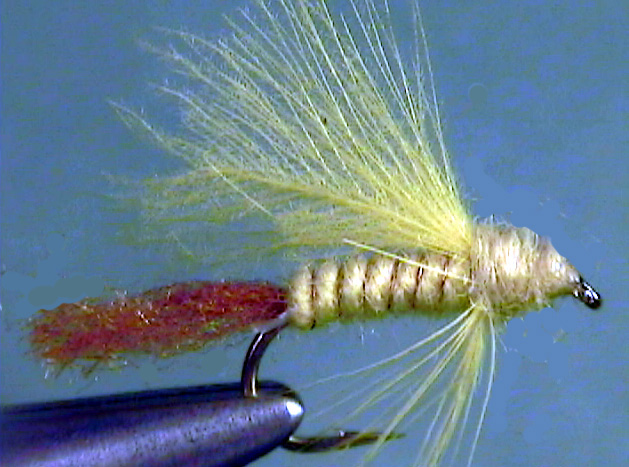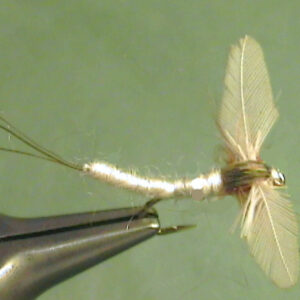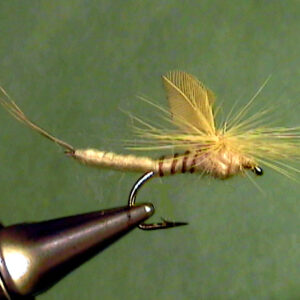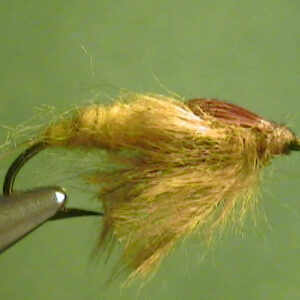Hook Size: 10
The Perfect Fly Golden Drake Emerger with trailing shuck is an excellent imitation of the actual emerger as it sheds its skin near the surface of the water as it changes into a dun. Golden Drake emerge in the afternoons. It looks more like the dun than the nymph. The fly should be fished just under the surface or in the surface skim.
The nymphs emerge in shallow water and usually close to the banks. They hatch on the
surface of the water. The water is usually fairly warm when this occurs and it doesn’t take
long for the newly hatched duns to depart the water.The Golden Drakes hatch at dust in a non-concentrated fashion. You rarely see a lot of
them on the water at any one time and place. When you do see a newly emerged dun on
the water, it is a good time to try the emerger imitations. If it is a cloudy or heavy overcast
day, these mayflies may begin to hatch earlier than normal. The trailing shuck version
represents the newly hatched mayfly when it still has the shuck attached to its abdomen.
This is the time the trout can easily pick them off.
surface of the water. The water is usually fairly warm when this occurs and it doesn’t take
long for the newly hatched duns to depart the water.The Golden Drakes hatch at dust in a non-concentrated fashion. You rarely see a lot of
them on the water at any one time and place. When you do see a newly emerged dun on
the water, it is a good time to try the emerger imitations. If it is a cloudy or heavy overcast
day, these mayflies may begin to hatch earlier than normal. The trailing shuck version
represents the newly hatched mayfly when it still has the shuck attached to its abdomen.
This is the time the trout can easily pick them off.
Presentation:
Use the same tactics I gave for fishing the nymph imitation during a hatch. Stay away
from the banks where you may spook trout feeding on the emergers and nymphs. If you
must wade, you need to get into the water prior to dark and move around as little as
possible.
The water in many rivers where these mayflies exist is very shallow during the time of
year they hatch. The biggest problem you may face is spooking the trout. You may need
to make some rather long presentations to prevent spooking them in shallow water. Down
and across presentation work better than upstream presentations in most situations.
Copyright 2013 James Marsh



